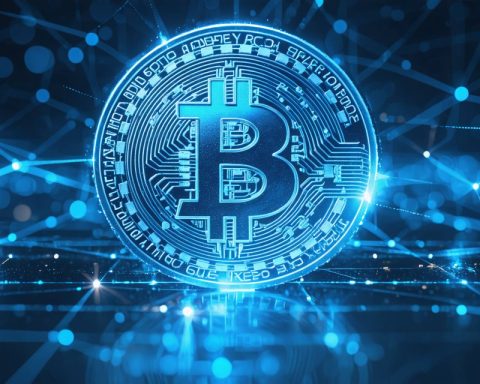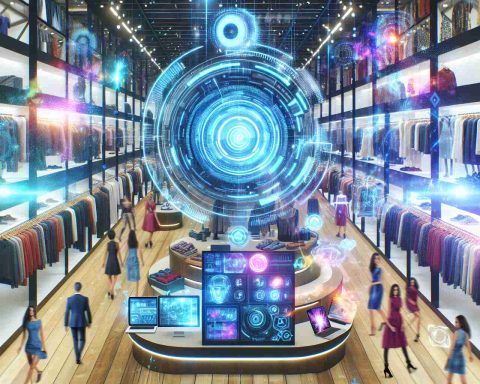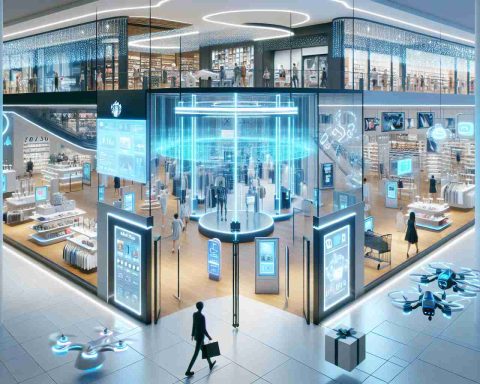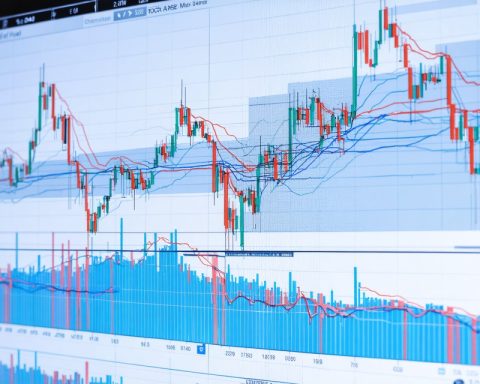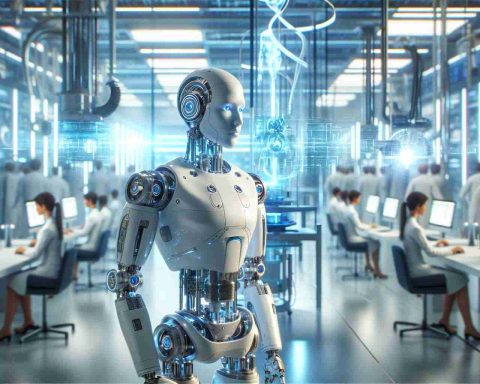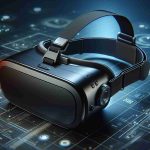- SoftBank Group plans a transformative $1 trillion investment in AI-driven factories across the United States to address labor shortages and redefine industrial landscapes.
- The investment marks a significant shift from SoftBank CEO Masayoshi Son’s initial $500 billion plan, demonstrating a deeper commitment to the U.S. economy.
- This ambitious move aligns with Son’s strategic history of enabling technological progress and job creation through large-scale investments.
- The Stargate project, featuring significant AI-focused data centers in collaboration with OpenAI and Oracle, represents the next leap in data management.
- SoftBank also supports software development in AI, highlighted by a $500 million funding for Skild AI, aiming to enhance robotics with general intelligence.
- SoftBank’s vision of integrating automated efficiency with human capability could reshape labor and manufacturing, driving economic growth in the U.S.
A staggering new chapter in the symbiotic dance between technology and industry is about to unfold in the United States. SoftBank Group, the renowned Japanese tech investment powerhouse, is preparing to inject a colossal $1 trillion into the creation of AI-driven factories, a venture poised to redefine America’s industrial landscape. These factories will rise in industrial parks scattered across the nation, equipped with cutting-edge robotic technology to tackle one of the most pressing issues confronting American manufacturers today: labor shortages.
SoftBank’s ambitious initiative marks a seismic shift from previous announcements by its influential CEO, Masayoshi Son. Initially, Son disclosed a $500 billion investment plan just this January, but quickly escalated those aspirations to a trillion-dollar endeavor, showcasing his deepening commitment to transforming the American economy. The plan dovetails elegantly with Son’s history of strategic investments that have catalyzed technological progress and job creation in the U.S.
An echo of this commitment was first heard back in December 2016, when Son publicly expressed his optimism in the potential of the U.S. under Donald Trump’s presidency, citing anticipated deregulations. This confidence materialized into significant financial commitments — a $100 billion pledge made at Mar-a-Lago ahead of Trump’s term, aimed at nurturing the AI ecosystem and crafting infrastructure to support it. Son believed in the transformative potential of a Trump administration, viewing it as an opportunity to double down on investments.
Fast forward to the Stargate project, introduced in January. This venture, set to build massive, AI-focused data centers, heralds the next frontier in data management and processing. With a monumental first data center sprawling over 500,000 square feet in Abilene, Texas, Stargate is a partnership steeped in cutting-edge innovation, involving industry giants like OpenAI and Oracle.
Even as SoftBank galvanizes the infrastructure for AI, it simultaneously forges forward in developing the software that powers these innovations. February saw SoftBank spearheading a $500 million round of funding for Skild AI, a promising startup on the brink of revolutionizing robotics with general intelligence capabilities. Robots that can adapt to perform a myriad of tasks are no longer a fantasy; instead, they represent a tangible solution to various workforce woes, from combating understaffing to executing hazardous tasks.
SoftBank’s grand vision could very well sculpt an era where automated efficiency seamlessly augments human capability, addressing labor disparities while fueling economic growth. By harnessing AI’s power, SoftBank not only positions itself at the pinnacle of technological evolution but also reimagines the potential for industry and workforce revolution across the United States. As this narrative unfolds, it becomes glaringly obvious: the future of manufacturing and labor is not just participant with technology — it is indelibly partnered with it.
The AI-Driven Revolution: How SoftBank’s $1 Trillion Plan Is Set to Transform Manufacturing in the U.S.
Overview: SoftBank’s Ambitious Trillion-Dollar AI Initiative
SoftBank Group’s massive $1 trillion investment in AI-driven factories marks a revolutionary step forward in the U.S. industrial sector. This ambitious venture aims to alleviate critical labor shortages and drive unprecedented advancements in automation and productivity. Spearheaded by SoftBank’s influential CEO, Masayoshi Son, this initiative signifies a paradigm shift from previous commitments, demonstrating a deep-seated belief in the transformative power of technology.
How Will AI-Driven Factories Change Manufacturing?
1. Automation and Efficiency: These AI-driven factories will incorporate cutting-edge robotic technology to automate numerous manufacturing processes. This will significantly enhance productivity and reduce the dependency on human labor for repetitive tasks.
2. Addressing Labor Shortages: By focusing on automation, these factories aim to fill the gaps left by labor shortages, enabling continuous operation without the constraints of human availability.
3. Enhanced Safety: Robots equipped with AI can perform hazardous tasks, reducing workplace injuries and improving overall factory safety.
4. Economic Growth: The establishment of these factories is anticipated to stimulate local economies, create supporting jobs, and foster technological innovation across industries.
Real-World Use Cases: Skild AI and Robotics Innovation
– Skild AI is at the forefront of developing robotics with general intelligence capabilities, backed by SoftBank’s $500 million funding. These robots are designed to be adaptable, enabling them to perform a wide range of tasks, from logistical challenges to precision manufacturing.
Industry Trends and Future Implications
– Market Forecasts: The global AI and robotics market is expected to see substantial growth, with projections reaching over $190 billion by 2026, driven by increasing adoption across various sectors.
– Sustainability and Security: AI-driven factories will need to incorporate sustainable practices and robust cybersecurity measures to protect against potential threats and drive long-term success.
Pressing Questions and Insights
– Will AI replace human jobs?
While AI and automation may replace some manual jobs, they will also create new opportunities in tech development, maintenance, and oversight. The focus is on augmenting human capabilities rather than entirely replacing them.
– What are the potential risks?
As with any significant technological shift, there are concerns regarding unemployment, ethical implications of AI deployment, and the need for skilled labor to manage and supervise AI systems.
Actionable Recommendations for Businesses
1. Invest in Workforce Reskilling: Prepare your workforce by investing in training programs that develop skills relevant to AI and robotic systems.
2. Embrace Automation: Evaluate current operations to identify areas where automation can enhance efficiency and output.
3. Develop a Cybersecurity Strategy: Ensure your systems are protected against cyber threats that could compromise AI-driven operations.
Final Thoughts
The integration of AI in manufacturing is not just an evolution; it is a revolution that promises enhanced productivity, economic growth, and sustained competitiveness in the global market. Companies should stay informed and agile to capitalize on these advancements and drive forward-thinking business strategies.
For more information on SoftBank and other technological innovations, visit SoftBank.




